Get to know the photo book "The Most Beautiful Trails of Patagonia"
Torres del Paine, El Chaltén, Bariloche, Ushuaia, Villarrica, Cerro Castillo, Dientes de Navarino and Parque Patagonia
Discovery Coast, Brazil
Patience to say ‘no’! That is what any tourist needs when in Porto Seguro, because everywhere he/she will be approached by salespeople. From coconut water to forró CDs, from clothes to boat tours, from crafts to temporary tattoos, they try to sell many different products and services, some of dubious quality..
Beside the salespeople, there are also people ‘taking care’ of the cars and the guides, who offer their services mainly on the ferry to Arraial d’Ajuda and in the Historical Center.
It looks awful, right? Wrong! This is just the negative point of being in Porto Seguro, easily offset by its many qualities. Starting from the Historic Center, which is well kept and offers a beautiful view of the area. By the way, the name Discovery Coast (Costa do Descobrimento) is used to designate this part of Bahia because it was here that Pedro Álvares Cabral “discovered” Brazil in 1500.

View from Porto Seguro Historical Center
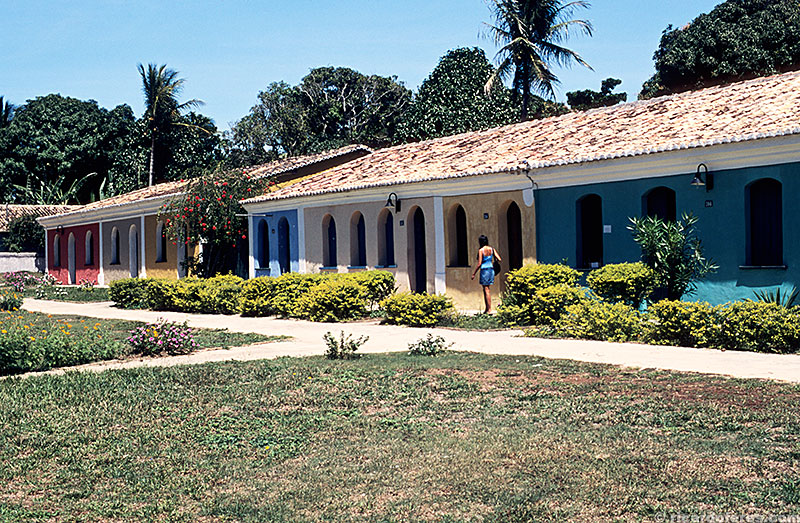
Porto Seguro Historical Center
Nightlife
The Passarela do Álcool is the point where the famous night of Porto Seguro begins. In the dozens of places selling drinks it’s easy to see the preference for ‘capeta‘, a drink originally made with brandy, guaraná, honey and lemon, but with the time it has gained new ingredients like condensed milk, pineapple, vodka, chocolate, cinnamon, etc.
If it’s on Passarela do Álcool that the night of the region begins, where does it end? In the huge bars by the sea, always with live musicians playing axé and forró. For those who like this type of music is a good choice, but if you don’t, go to sleep early, get up with the sun and have more time to enjoy the beaches or to dive.
South Coast
Just south of Porto Seguro, crossing Buranhém River by ferry, stands Arraial d’Ajuda. Although the beaches are the main attraction of Arraial, reserve a few hours to see its center, which offers good options of restaurants, hostels and stores.
Of its eight beaches, the most beautiful is Taípe. Less crowded than the others and with big cliffs, some with more than 40 meters (131 feet) of height, is guarantee of tranquility for those who move away from the kiosks..
It’s worth remembering that like the beaches of Porto Seguro north coast, in some places of the south coast the water is a brownish because of the several rivers flowing to the sea, but don’t worry because it’s not something that takes away its beauty. And, depending on the tides, you can swim in the tide pools made by the reefs that protect the coast.
Trancoso, a district to the south of Arraial d’Ajuda, is less famous but has beaches as beautiful as those of its famous neighbor. The ones that deserve a good visit are Nativos, Coqueiros and Pedra Grande, locally called Nudist Beach. Even if it’s not officially recognized as a nudist beach (or naturist, as they prefer), it won’t be difficult to find one sunbathing like he/she was born.
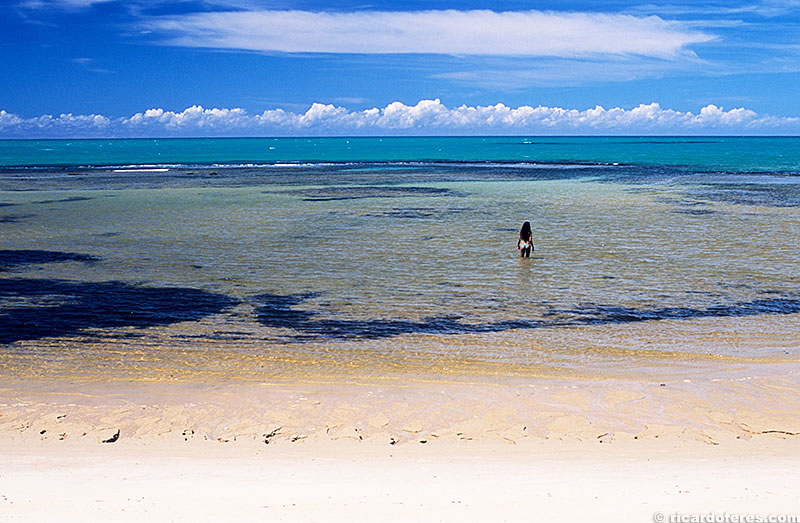
Tide pool
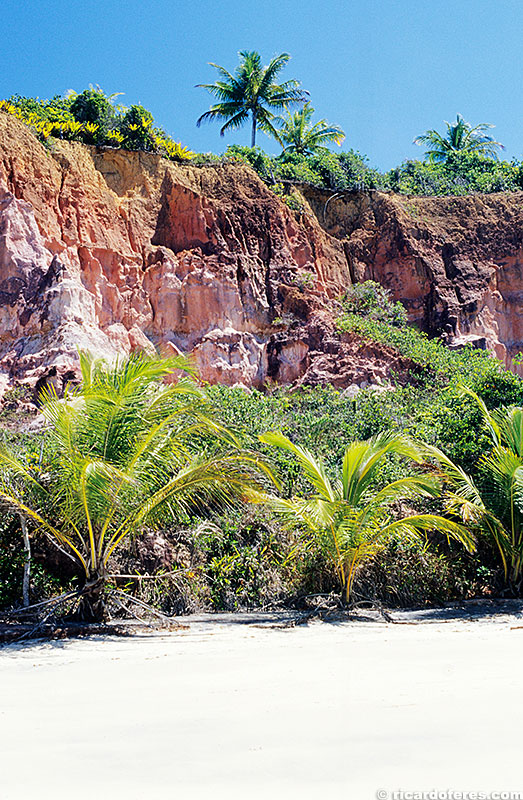
Cliff

Nativos Beach
In the north of Pedra Grande Beach you’ll find Pé na Praia bar and restaurant, which offers a nice atmosphere with good dishes and drinks. By the way, my tip is the grilled fish with vegetables, mango and chutney sauce.
The center of Trancoso is not as charming as Arraial, but if you don’t mind waking up early, go there to see the sunrise behind São João Church, in the main square of the district, called Quadrado.
Caraíva
Approximately 70 km (43 mi) to the south of Porto Seguro, bordering Monte Pascoal National Park, there is a small fishing village where there are no cars, motorcycles, buses or trucks. That’s because to reach Caraíva you have to cross the river of the same name, and this crossing is made by canoes, since fortunately there are no bridges or ferries. The result couldn’t be better: a perfect place for those who want to rest in strong contact with the nature.
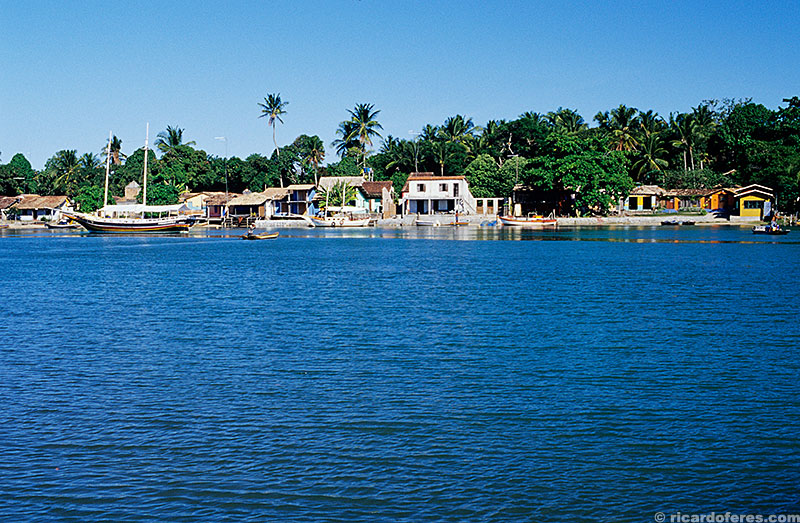
Caraíva
Until 1999, there was no electricity in the cozy village between the sea and the river. Only at night Caraíva change its pace by the sound of forró music to celebrate another day that’s arriving, almost always sunny and with a refreshing breeze that gives a great help to those who walk along the beach to the Pataxó indigenous reserve.
A tour that requires less effort but also is a must is the ascent of the river in a motor boat to observe the rich ecosystem formed by the mangroves.
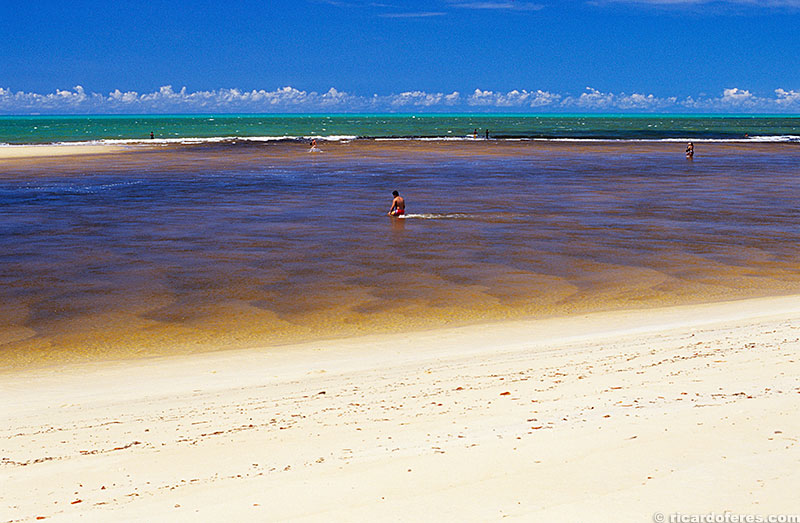
Caraíva River and the sea
A few kilometers to the north of the village, already in a place accessible by cars, are Espelho and Curuípe beaches, apart from each other only by a small river. The two are spectacular, undoubtedly the most beautiful I’ve seen during the whole trip! I won’t try to describe them in words as it would be useless, I’d rather use the images below.
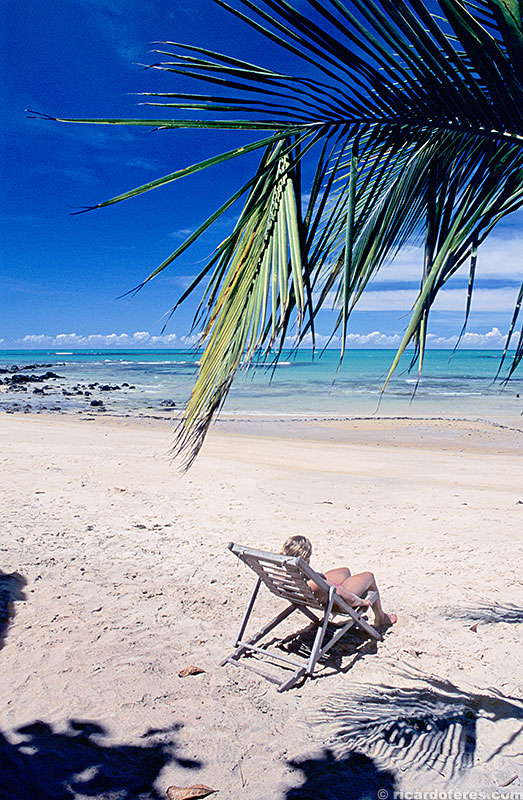
Curuípe
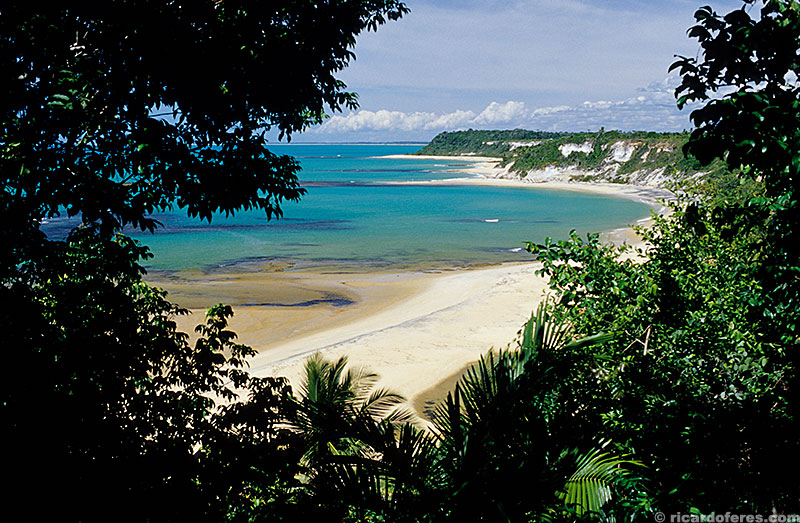
Espelho Beach
Get to know the photo book "The Most Beautiful Trails of Patagonia"
Torres del Paine, El Chaltén, Bariloche, Ushuaia, Villarrica, Cerro Castillo, Dientes de Navarino and Parque Patagonia
